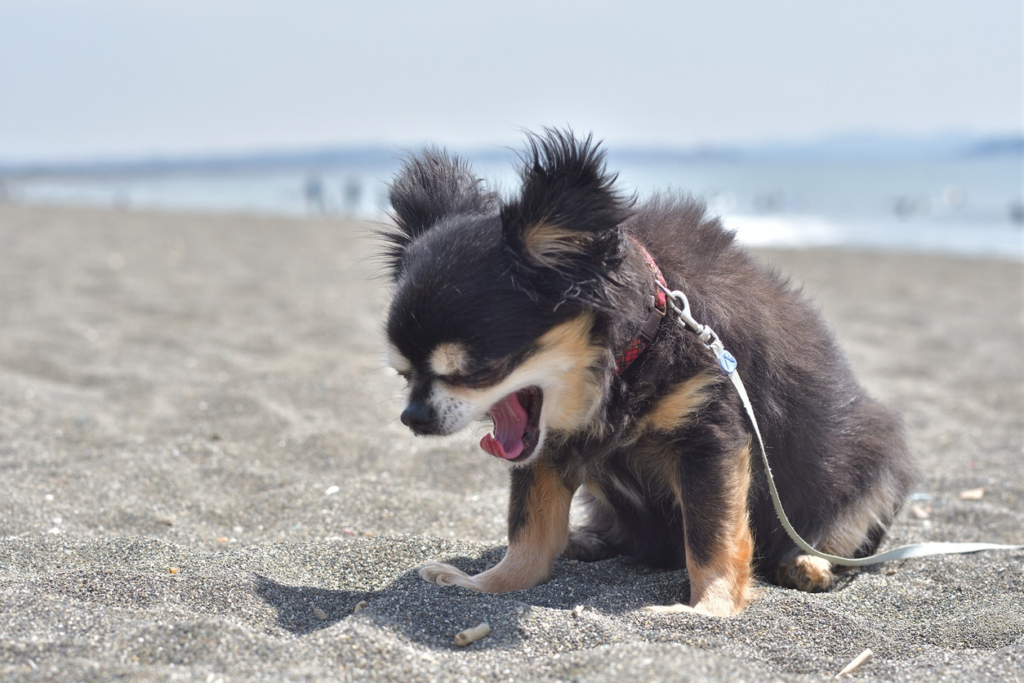
If you’ve ever witnessed your dog making strange snorting or honking sounds that seem to come out of nowhere, they may be experiencing a phenomenon known as reverse sneezing. While it can be alarming for pet owners, reverse sneezing is generally harmless and common among dogs. In this article, we will delve into the world of dog reverse sneezing, exploring its causes, symptoms, and providing helpful tips on managing this peculiar behavior.
What is Reverse Sneezing in Dogs?
Reverse sneezing, also known as inspiratory paroxysmal respiration, is a reflex action characterized by a sudden and forceful inhalation, often accompanied by snorting, honking, or gagging sounds. It is called “reverse” sneezing because, unlike a regular sneeze, the air is pulled in rather than expelled.
Causes of Reverse Sneezing: While the exact cause of reverse sneezing is not fully understood, several factors can trigger or contribute to this behavior:
a. Irritants or Allergies: Inhalation of airborne irritants such as dust, pollen, or strong odors may induce a reverse sneezing episode in dogs, especially those prone to allergies.
b. Excitement or Overstimulation: Dogs may experience reverse sneezing episodes when they are overly excited, anxious, or after engaging in vigorous physical activity.
c. Nasal Irritation: Anything that irritates the nasal passages, including mucus, post-nasal drip, or foreign objects, can trigger reverse sneezing.
d. Structural Factors: Certain dog breeds with elongated or narrow nasal passages, such as brachycephalic breeds (e.g., Bulldogs, Pugs), may be more susceptible to reverse sneezing due to their anatomical features.
Recognizing Reverse Sneezing: Identifying reverse sneezing in dogs can help differentiate it from other respiratory issues:
a. Snorting Sounds: Reverse sneezing is characterized by repeated snorting, honking, or gasping sounds that occur during episodes of rapid and forceful inhalation.
b. Posture and Behavior: Dogs experiencing reverse sneezing often extend their necks, stand still, and appear to be trying to clear their nasal passages. They may exhibit signs of mild distress or anxiety during the episode.
c. Duration: Reverse sneezing episodes typically last for a few seconds up to a minute, but they may vary in frequency and intensity.
Managing Reverse Sneezing Episodes: Although reverse sneezing is generally harmless, there are a few strategies that can help alleviate the symptoms and provide comfort to your dog:
a. Stay Calm: During a reverse sneezing episode, remain calm and avoid panicking. Comfort your dog with a soothing voice and gentle strokes to help them relax.
b. Gently Massage the Throat: Gently massaging your dog’s throat or covering their nostrils with your hand for a few seconds can sometimes interrupt the reverse sneezing reflex and bring relief.
c. Distraction Techniques: Engaging your dog in an activity, such as offering a treat, gently blowing on their face, or redirecting their attention with a favorite toy, can help shift their focus and interrupt the episode.
d. Environmental Modifications: Minimize exposure to potential irritants in your dog’s environment, such as dust, strong odors, or airborne allergens. Keeping your home clean and ensuring proper ventilation can also help reduce triggers.
When to Seek Veterinary Advice: While reverse sneezing is usually harmless, there are instances where veterinary attention may be warranted:
a. Frequent or Prolonged Episodes: If your dog experiences frequent or prolonged episodes of reverse sneezing, it is advisable to consult with a veterinarian to rule out underlying respiratory conditions.
b. Concurrent Symptoms: If reverse sneezing is accompanied by other concerning symptoms, such as coughing, difficulty breathing, nasal discharge, or changes in behavior, seeking veterinary advice is recommended.
Reverse sneezing is a peculiar behavior that can startle dog owners, but it is typically harmless and often self-limiting. Understanding the causes, recognizing the symptoms, and implementing appropriate management techniques can help provide comfort to your dog during reverse sneezing episodes. By staying calm, offering reassurance, and making environmental modifications, you can help minimize triggers and promote your dog’s overall well-being. However, if you have any concerns or if reverse sneezing becomes frequent or prolonged, it is always best to consult with a veterinarian for a proper evaluation and guidance specific to your dog’s needs.